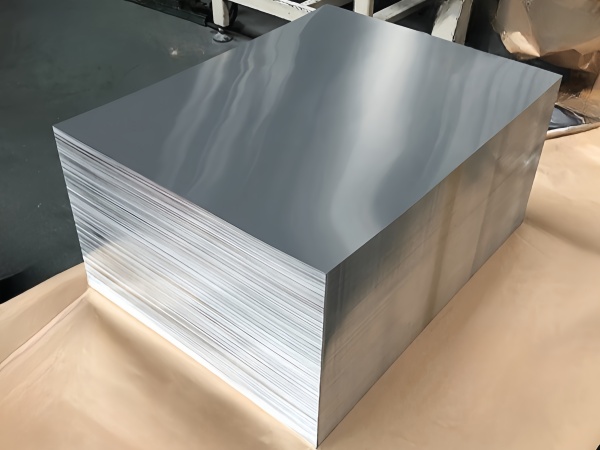
application area
New energy vehicle: It is widely used in body structural parts, battery packs, battery module side plates, water cooling plates, charging piles and other parts of new energy vehicles. For example, 5083 aluminum plate can be used as the side plate of battery module, which has good formability, corrosion resistance, weldability and medium strength, and can effectively protect battery module; 3003 aluminum plate is often used in the manufacture of water-cooled plates, which meets the requirements of corrosion resistance and machinability, and ensures the stability and safety of power batteries in high-temperature working environment.
New energy battery production: such as battery foil, is one of the important raw materials for new energy batteries such as lithium ion batteries. The new energy battery foil and other products produced by Dingsheng New Materials are widely used in lithium batteries and other fields.
Construction of new energy vehicle 4S shop: like the punched aluminum plate of Guangzhou Automobile New Energy 4S shop, it can be used for ceiling decoration, reflecting the environmental protection theme of new energy vehicles. It has the advantages of good rigidity, high strength, good manufacturability, easy processing and convenient installation, and the materials can be recycled.
Commonly used alloy grades and performance characteristics
3003 aluminum plate: belonging to Al-Mn alloy, it has good corrosion resistance, machinability and solderability. Its strength is about 10% higher than that of 1100 series, and its formability, weldability and corrosion resistance are all good. It is widely used in power battery cases, water cooling plates and other parts.
5083 aluminum plate: Al-Mg alloy, with magnesium as the main alloy element, has low density and light weight, meets the development requirements of lightweight new energy vehicles, has high strength and fatigue resistance, can withstand certain external impact, has high elongation, good plasticity, easy processing and forming, and good corrosion resistance, and is often used in battery module side plates and other parts.
6061 aluminum plate: it has high strength, good corrosion resistance and machinability, good oxidation effect, small deformation after processing and even quenching, and is often used to manufacture automobile battery trays, housings and other parts.
1060 aluminum plate: It contains 99.6% aluminum, also known as pure aluminum plate. It has good conductivity, elongation and tensile strength, and can meet the conventional processing requirements. It is often used in charging piles of new energy vehicles, soft connections of batteries, automobile heat shields and other parts.
5A05 aluminum plate: Al-Mg alloy, with high rust-proof and environmental protection characteristics, good weldability, cutting and polishing, and high strength, can be applied to some structural parts or parts of new energy vehicles.
superiority
Lightweight: New energy aluminum plate has low density and light weight, which helps to reduce the weight of new energy vehicles and other equipment, thus improving energy utilization efficiency and increasing cruising range, which meets the requirements of lightweight in the new energy field.
Good corrosion resistance: it can maintain stable performance in various harsh environments, such as humidity, acid and alkali, prolong service life and ensure the reliability and safety of new energy equipment.
Excellent machinability: easy to punch, stretch and bend, which can meet the manufacturing requirements of parts with different shapes and sizes, improve production efficiency and reduce production costs.
Recyclable: Aluminum alloy has good recyclability and high recycling value, which conforms to the concept of environmental protection and sustainable development and reduces resource waste.
Good thermal and electrical conductivity: some aluminum plates have good thermal and electrical conductivity, such as 1060 aluminum plate, which is suitable for parts that need heat dissipation or electrical conductivity, such as automobile radiator and battery soft connection.
manufacturing process
Melting: Put high-purity aluminum ingots and alloying elements such as magnesium, silicon, copper, manganese, etc. into a melting furnace for heating and melting, and remove impurities and gases through stirring, refining and other processes to obtain aluminum alloy melt with uniform composition and high purity.
Casting: the molten aluminum alloy is poured into a pre-designed mold and solidified under natural cooling or forced cooling conditions to obtain an aluminum alloy ingot. Common casting methods include gravity casting, pressure casting and centrifugal casting.
Hot rolling: After the ingot is heated to a certain temperature, it is rolled on a hot rolling mill for many times to gradually reduce its thickness, improve the microstructure and properties of aluminum plate, and improve its strength and toughness.
Cold rolling: further rolling the hot rolled aluminum plate at room temperature can obtain higher dimensional accuracy and surface quality, and further improve the strength of aluminum plate.
Surface treatment: In order to improve the corrosion resistance, wear resistance and decorative properties of aluminum plate, anodizing, electrophoretic coating, powder spraying and other surface treatment processes are often used to form a protective film or coating on the surface of aluminum plate.